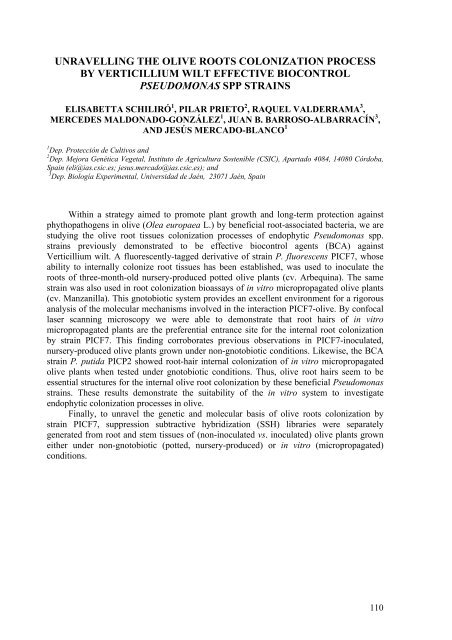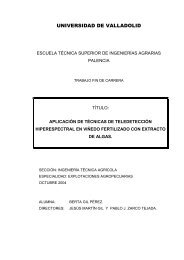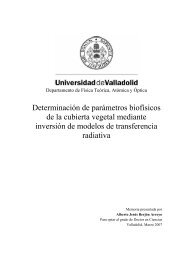10th INTERNATIONAL VERTICILLIUM SYMPOSIUM 16-20 ...
10th INTERNATIONAL VERTICILLIUM SYMPOSIUM 16-20 ...
10th INTERNATIONAL VERTICILLIUM SYMPOSIUM 16-20 ...
Create successful ePaper yourself
Turn your PDF publications into a flip-book with our unique Google optimized e-Paper software.
UNRAVELLING THE OLIVE ROOTS COLONIZATION PROCESSBY <strong>VERTICILLIUM</strong> WILT EFFECTIVE BIOCONTROLPSEUDOMONAS SPP STRAINSELISABETTA SCHILIRÓ 1 , PILAR PRIETO 2 , RAQUEL VALDERRAMA 3 ,MERCEDES MALDONADO-GONZÁLEZ 1 , JUAN B. BARROSO-ALBARRACÍN 3 ,AND JESÚS MERCADO-BLANCO 11 Dep. Protección de Cultivos and2 Dep. Mejora Genética Vegetal, Instituto de Agricultura Sostenible (CSIC), Apartado 4084, 14080 Córdoba,Spain (eli@ias.csic.es; jesus.mercado@ias.csic.es); and3 Dep. Biología Experimental, Universidad de Jaén, 23071 Jaén, SpainWithin a strategy aimed to promote plant growth and long-term protection againstphythopathogens in olive (Olea europaea L.) by beneficial root-associated bacteria, we arestudying the olive root tissues colonization processes of endophytic Pseudomonas spp.strains previously demonstrated to be effective biocontrol agents (BCA) againstVerticillium wilt. A fluorescently-tagged derivative of strain P. fluorescens PICF7, whoseability to internally colonize root tissues has been established, was used to inoculate theroots of three-month-old nursery-produced potted olive plants (cv. Arbequina). The samestrain was also used in root colonization bioassays of in vitro micropropagated olive plants(cv. Manzanilla). This gnotobiotic system provides an excellent environment for a rigorousanalysis of the molecular mechanisms involved in the interaction PICF7-olive. By confocallaser scanning microscopy we were able to demonstrate that root hairs of in vitromicropropagated plants are the preferential entrance site for the internal root colonizationby strain PICF7. This finding corroborates previous observations in PICF7-inoculated,nursery-produced olive plants grown under non-gnotobiotic conditions. Likewise, the BCAstrain P. putida PICP2 showed root-hair internal colonization of in vitro micropropagatedolive plants when tested under gnotobiotic conditions. Thus, olive root hairs seem to beessential structures for the internal olive root colonization by these beneficial Pseudomonasstrains. These results demonstrate the suitability of the in vitro system to investigateendophytic colonization processes in olive.Finally, to unravel the genetic and molecular basis of olive roots colonization bystrain PICF7, suppression subtractive hybridization (SSH) libraries were separatelygenerated from root and stem tissues of (non-inoculated vs. inoculated) olive plants growneither under non-gnotobiotic (potted, nursery-produced) or in vitro (micropropagated)conditions.110




